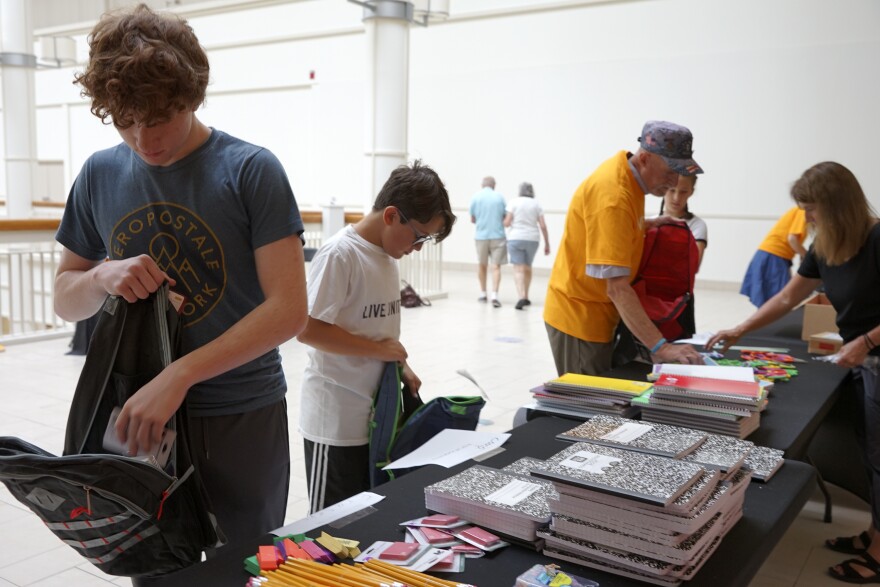Students who attend Danbury’s Ellsworth Avenue School are in luck.
Some of them will get free backpacks and supplies to start off the school year. United Way of Coastal and Western Connecticut CEO and President, Isabel Almeida, said the need is greater than ever.
“Without question, we're seeing many more of those families at this point coming forward,” Almeida said.
Almeida spoke at the Danbury Fair Mall Thursday, where volunteers stuffed backpacks and prepared up to 300 to be distributed Monday at the school.
United Way first launched backpack giveaways 26 years ago, and while many parents continue to need the basics, growing inflation and demographic changes have also impacted United Way’s work.
Almeida made her way across the table where volunteers lined up to stuff backpacks, along with Senior Vice President of Community Impact, Ashley Gaudiano. Gaudiano said much of Danbury struggles to make ends meet.
“One in three families in Danbury can't afford the basic cost of living and, back to school is a challenging time,” Gaudiano said.
The U.S. Census shows the city has a poverty rate of 10.6%, but United Way uses its own metrics for measuring poverty called ALICE or Asset Limited, Income Constrained, Employed, which it states, differs from the government’s poverty levels by counting residents who make more than the poverty wage, but less than local cost of living expenses.
By that metric, 49% of Danbury struggles with their finances.
Another factor that has impacted United Way’s efforts is the changing demographics of Danbury’s school system. According to CT Mirror, Danbury High School has seen a significant increase in the Latino student population.
That has impacted United Way’s work, Almeida said.
“There's without a doubt, a more significant demographic need among our Latino, minority BIPOC community, Almeida said. “And so without question, naturally, the families that are identified to receive this support tend to fall into those demographics, they are over represented in the ALICE threshold.”
Danbury’s schools also face their own challenges. According to The NewsTimes, Danbury’s school system is planning teacher layoffs and faces budget issues.
United Way works with the school system to figure out which items are needed most, Almeida said public and nonprofit partnerships are crucial to address poverty in the city.
“Working together both with public institutions, with corporations, with private organizations, individual donors, that is the only way to truly have the impact that we need and move the needle in our community,” she said.
And volunteers at the mall lined up to do their part. Paul Trudel lined up stuffing a backpack with notebooks and crayons. He’s been volunteering for 10 years.
“It gives me the chance to give back to the community," Trudel said. "And there's so much need in Danbury."





